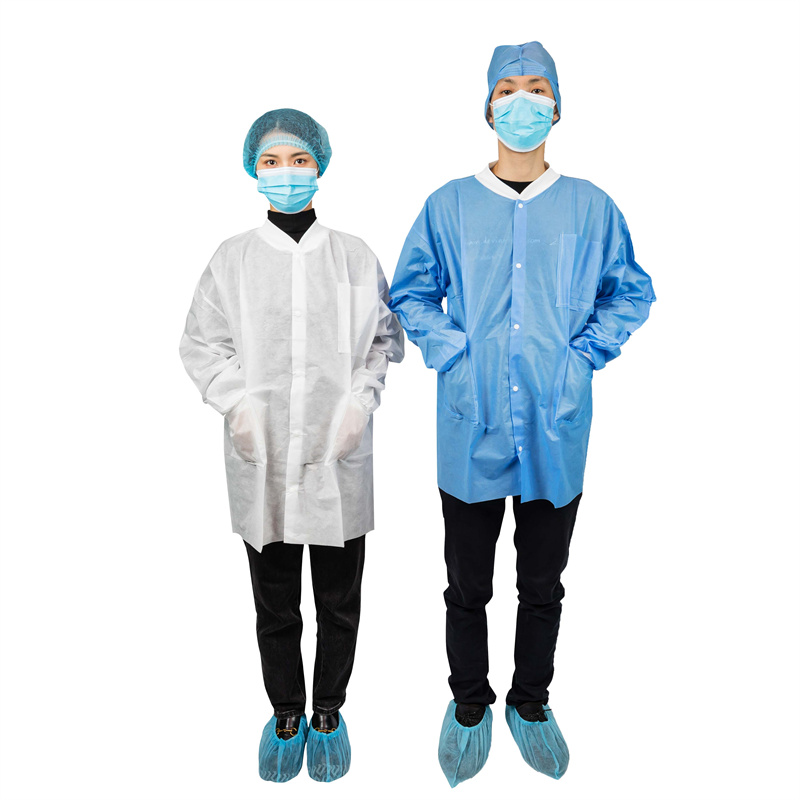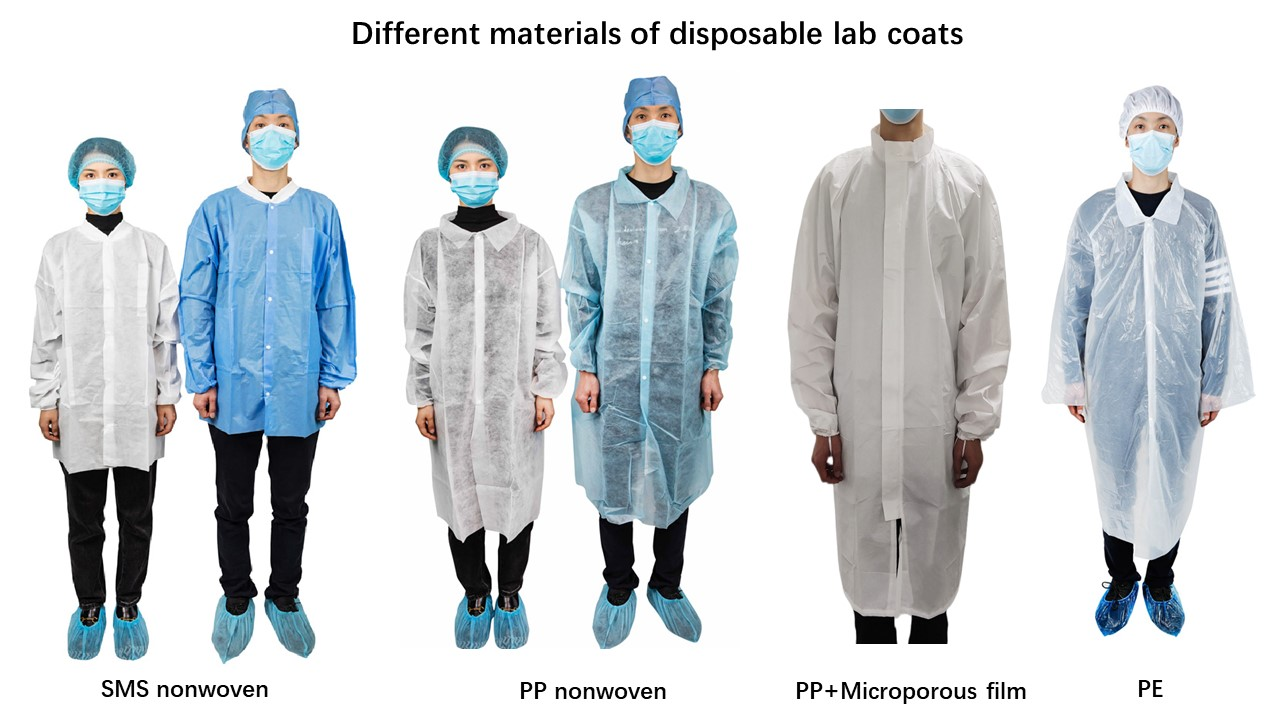Lab coats, produced by manufacturers like Wuhan Youfu, play a crucial role in various industries, particularly in the medical, pharmaceutical, and laboratory fields. They provide a superior barrier protection, acting as protective clothing against hazardous liquids, small hazardous particles, and potential cross contamination. This article explores the various materials used in disposable lab coats, highlighting their unique features and benefits.

Understanding Lab Coats
Lab coats are more than just a uniform – they are an essential piece of protective clothing. Lab coats, whether reusable lab coats or disposable lab coats, serve to protect the skin and clothing from spills and splashes of hazardous liquids. The type of lab coat one wears depends on the level of protection required and the nature of their work.

Importance of Lab Coats
Lab coats are designed to protect against cross contamination and infectious diseases. They provide a waterproof barrier protection, shielding the wearer from harmful contaminants, liquid splashes, and bodily fluids.

Disposable Lab Coat Material
The most common materials used in disposable lab coats include SMS, PP, Microporous, and PE.
SMS Material for Disposable Nonwoven Lab Coats
SMS material offers a blend of comfort and protection. It provides a high level of fluid resistance while remaining breathable, making it an ideal material for disposable nonwoven lab coats.
PP Material for Disposable Nonwoven Lab Coats
Polypropylene (PP) is a durable and cost-effective material for lab coats. It offers protection against particulate matter, making it suitable for environments where dust and dirt are a concern.
Microporous Material for Disposable Nonwoven Lab Coats
Microporous material provides a waterproof and breathable protection. It’s ideal for lab coats that need to protect against small hazardous particles and liquid splashes.
PE Material for Disposable Plastic Lab Coats
Polyethylene (PE) is commonly used in disposable plastic lab coats. It provides a waterproof barrier, making it ideal for dealing with liquid-based hazards.
PP coated with PE for Lab Coats
For added protection, polypropylene can be coated with polyethylene. This combines the durability of PP with the waterproof protection of PE, making it an excellent material for lab coats.

Features of Disposable Lab Coats
Disposable lab coats come with a variety of features for added comfort and protection. These include a knit collar for comfort, elastic wrists to prevent sleeve roll-up, and a knee length design for full coverage.
The Superior Barrier Protection of Disposable Lab Coats
Disposable lab coats provide superior barrier protection compared to their reusable counterparts. They are designed to protect the wearer from hazardous liquids, cross contamination, and small hazardous particles.
The Fluid Resistant Nature of Lab Coats
Lab coats are designed to be fluid resistant, providing a waterproof barrier protection. This is particularly important in medical and laboratory environments where contact with bodily fluids and hazardous liquids is possible.
The Role of Disposable Lab Coats in Protecting Against Harmful Contaminants
Disposable lab coats play a crucial role in protecting against harmful contaminants. They provide a barrier against infectious diseases, preventing cross contamination.

The Comfort of Disposable Lab Coats
Despite their protective nature, disposable lab coats are designed with comfort in mind. They are lightweight, breathable, and often feature a knit collar and elastic wrists for added comfort.

The Durability of Disposable Lab Coats
Disposable lab coats are durable and tear resistant, designed to withstand the rigors of the lab environment. They are made from materials such as SMS, PP, and PE, which are known for their durability.
The Cost-Effectiveness of Disposable Lab Coats
Disposable lab coats are a cost-effective option compared to reusable lab coats. They eliminate the need for laundering, saving time and resources.
The Safety Features of Disposable Lab Coats
Safety is a key feature of disposable lab coats. Wuhan Youfu lab coats, for example, offer superior barrier protection, are fluid resistant, and help to prevent cross contamination.

The Environmental Impact of Disposable Lab Coats
While disposable lab coats are a single-use item, many are made from eco-friendly materials that are recyclable. This helps to reduce the environmental impact of these essential items.
The Role of Disposable Lab Coats in Pharmaceutical Manufacturing
In pharmaceutical manufacturing, disposable lab coats play a crucial role in maintaining a sterile environment and preventing cross contamination.

บทสรุป
Disposable lab coats, like those from Wuhan Youfu, are an essential piece of protective clothing in many industries. They offer superior barrier protection, are fluid resistant, and help to protect against harmful contaminants. By understanding the materials used in their construction, one can make an informed decision about the best lab coat for their needs.
คำถามที่พบบ่อย
1.What are the most common materials used in disposable lab coats?
The most common materials are SMS, PP, Microporous, and PE.
2.Are disposable lab coats fluid resistant?
Yes, they provide a waterproof barrier protection.
3.Are disposable lab coats comfortable to wear?
Yes, they are designed to be lightweight and breathable for comfort.
4.Are disposable lab coats durable?
Yes, they are made from durable materials like SMS, PP, and PE.
5.Are disposable lab coats eco-friendly?
Many disposable lab coats are made from recyclable materials, reducing their environmental impact.











